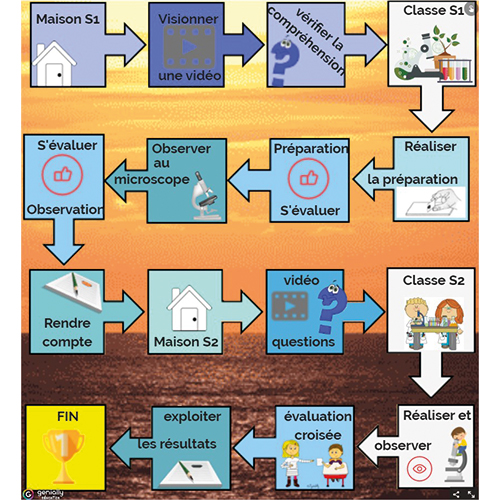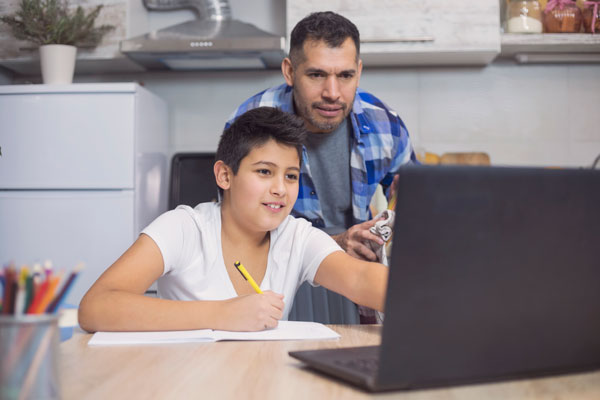How do you prepare students for microscope use in the inverted Class?
[Testimonial]
Christelle Jacquemin, an SVT teacher for 21 years, has been working for 5 years in a rural Secondary school in Moselle, the Collège des deux Sarres in Lorquin. A keen user of digital solutions in the classroom, she was quick to pick up the Skolengo ENT. Its user-friendliness and wide range of functions quickly made it an essential tool for her classroom practices, particularly for the flipped classroom.
Why use the flipped classroom?
When did you decide to use the flipped classroom?
I discovered the flipped classroom almost 10 years ago. When I arrived at my new Secondary school, I didn't have a textbook to work with the students. So I had to create my own materials. My classes were very full for a science subject (for example, this year 27 students in 6ème, not doubled up / 26 in 4ème...).s / 26 in 4ème...) if I want to get the students to manipulate, I have to get them to acquire a certain number of notions at home. Finally, to differentiate the work proposed to the Students, this practice seemed to me to be ideal.
Initially, I posted my Course(s) on a personal website. The Skolengo ENT made it easier to set up this practice.

How to set up a flipped Class with ENT?
A concrete example of how to set up a flipped Class.
In 6th grade, I have to work on the concept of the cell. The Students will have to prepare a microscopic slide and observe under a microscope. It's a sequence full of novelties, as the 6th graders have never worked on this subject before, and have rarely seen a microscope.
So I propose what I call a "reversed course" built with Genial-ly, which I post on the blog of the Class space reserved for SVT in 6ème. The first step is viewing a video followed by a questionnaire to check that they've understood how to use a microscope. A questionnaire (made with LaQuizinière) is given to students via the digital Organiser textbook.
The replies to the questionnaire enable me to create groups for the first Observation in Class.
The principle is the same throughout the inverted path sequence: knowledge concepts are given in video form at home, and practice takes place in class.
What do you think are the benefits of the flipped Class?
This practice free up time in the classroom to manipulate. And, I can see immediately (and before the Lesson) which Students seem to be in difficulty, so I can individualize the work I can individualize the work I suggest BEFORE they arrive in class.
The inverted Class also enables me to see which points of the lesson have been mostly understood and which still need to be reviewed in greater depth.
How does the Skolengo digital workspace help you prepare your Course(s)?
I use other digital tools in addition to the Skolengo ENT. The ENT allows me to provide students with interactive materials (via the Blog) and quizzes (via the digital Organiser). Mailbox is also used a lot to remind students who haven't done the work what they have to do, or to answer questions from students after watching videos.
The digital Organiser allows me to differentiate the work given to students: I can assign work individually and not necessarily to the whole class. I can insist on certain notions with students in difficulty or, on the contrary, with students who need "more".


